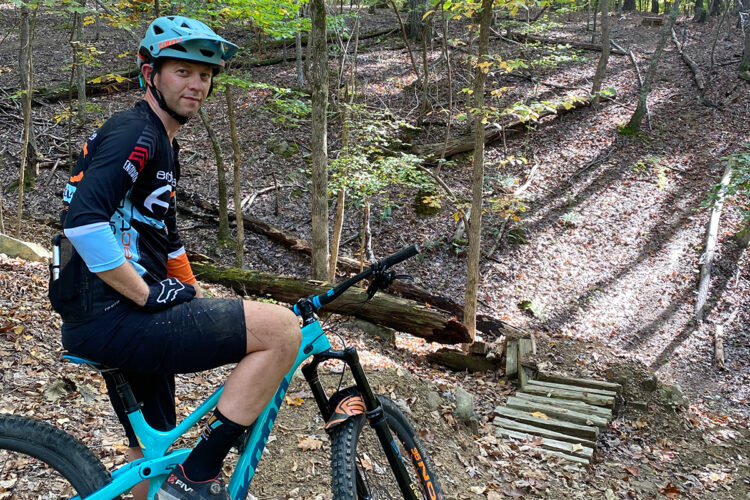
They say desk jobs are deadly, and I am inclined to believe it’s true. At the end of an 8+ hour day of sitting or standing before a glowing screen my back muscles hurt, my legs hang heavy with pooled blood, and my energy stores for a night ride or workout session seem unreachable. Our bodies need to move far more than offices allow, and there are things we can all do to rectify the situation.
According to an article by Roberta Florido, M.D, and Erin Michos, M.D., M.H.S. on US News.com, for “those who work out regularly […] daily exercise is by itself not enough to make up for all those hours sitting at a desk. Indeed, mounting evidence suggests that those who spend hours with little movement are at higher risk for developing blood clots, diabetes, cardiovascular disease and a constellation of other maladies fueled by insufficient physical activity.”
Instead of shaming ourselves and pressing on toward poor posture and continued stagnation, let’s look at a few ways we could add some movement and mindfulness to our cubicles. While exercising and meditating in public may be somewhat taboo, It’s likely better to be healthy than socially obedient. Who knows, if you start planking at your desk every 45 minutes, your coworkers may even want to join in.
Strength and movement

I have been on the hunt for a way to break up sedentary workdays with exercise for some time now. I want to be reminded to exercise at specific intervals throughout the day, both to initiate blood flow and gain strength. I found both of those things in a desktop application called Sluggard.
Sluggard is a free app for Mac users that gives notices to do particular exercises at selected temporal intervals. Users enter their age, gender, and perceived fitness level into the app’s database. From there, simply choose two of the ten exercises to do and how much time to wait between them. That’s it. A popup will appear to remind you when it’s time to perform a specific exercise, and once it’s completed you can track how many reps were completed. You can also pause the exercise or skip it if you are in the middle of something urgent.
There is a paid version of the app that allows users to select more than two of the exercises, or name their own movement prompts, and to schedule multiple reminders at varying intervals.
Sluggard is the most effective and unintrusive exercise app I have found thus far, and I am able to do significantly more pushups and crunches throughout the workday thanks to its reminders. In addition to fighting the “sitting disease,” I don’t need to go to the gym to get core and upper body work in, which gives me more time to ride and saves some cash.
For Android and Apple users alike, the Peloton app includes guided workouts and desk-yoga to improve strength, stamina, and balance while breaking up the workday. One of my coworkers uses it regularly, and says “[I am a] big fan of Peloton app! They have 5 minute workouts and desk yoga. There really is no excuse not to move during the day! It can really get you in shape for mountain biking with intervals and strength training.”
Focus, at work and on the trail

Carving a brief space in your day for a solid meditative brain flush can improve your overall mental health, help you be more productive at work, and improve your focus on the trail. Finding flow in yourself, even momentarily, will help you find it everywhere else. It also might turn you toward the kind and generous route when interacting with others, which is never a bad move.
Headspace and Calm are just two of the thousands of apps that include guided meditation sessions in manageable lengths and diverse styles. If you don’t want to wade through the rest, these are two of the most highly-rated options, and I can say from experience that each provides a sensible way to ease into a beneficial meditation practice.
Headspace includes a massive variety of guided meditation styles and foci, including walking meditation, work-specific meditation, body scan meditation, kids meditation, couples meditation, and many more. Headspace is free, and you can pay for the premium version to access additional sessions if you choose. If you are worried your employer won’t be stoked with you meditating at work, maybe tell them that it is part of your spiritual practice. After a short while, that just might become the truth.
Calm, on the other hand, has myriad meditation options to guide and focus your brain as well, but one of their coolest features is sleep stories. This feature is great for folks who have trouble falling asleep, or who wake frequently throughout the night. It’s essentially a set of relaxing narratives read by people with soothing voices, like May Charters and Mathew McConaughey. Calm is free for the first week and then rings up at $59.99 annually. Five bucks a month for sound sleep sounds brilliant.
Time tracking and saving

Time tracking apps like Rescuetime and Marinara Timer can help you get more done at work in fewer hours so you have more time to ride. Well, that is provided your boss trusts that they hired competent employees, and cares more about what you get done that how many hours you sit a desk. If you work a classic 9-5 shift these apps might help you have more time to work on new projects that will earn you a promotion, which could mean funds for a new bike.
Rescuetime tracks your productive vs. distracted time on the computer and counts the time you spend away from your desk in meetings or other activities. After a couple of weeks, the program learns your use patterns and allows you to note what sites and apps are used for work and which are mere distractions. You can insert time limits for sites that you find yourself spending too much time on, sort of like parental-controls for adults. At the close of each week, the program will send a summary of your productive and distracted time so that you know where to adjust your priorities in order to get to the trailhead sooner.
The Pomodoro Method was developed by Francesco Cirillo to improve his ability to focus and complete tasks in university. The original idea is dead simple: work for 25 minutes with a timer running to tell you have reached the end, then take a short five-minute break to refresh your mind and manage any other tasks, followed by another 25 minutes of focus. Then, after four intervals, take a fifteen-minute pause to reset and interact with your co-workers.
The Pomodoro system has been tested and researched from countless perspectives, and it works. The catch is that a good number of tasks require more than 25 minutes of focused attention. Browser-based tools like the Marinara Timer allow users to customize the amount of focus and break time they need for their particular work. Simply set the custom time for the work interval, turn off all distractions, and get it done.
Hopefully, some of these digital tools can help you break the “I’ll totally start that next Monday” streak, as they have for me. Do you have any applications or reminders that help you move or otherwise be healthier and more efficient throughout the day? Share them in the comments below.




















0 Comments